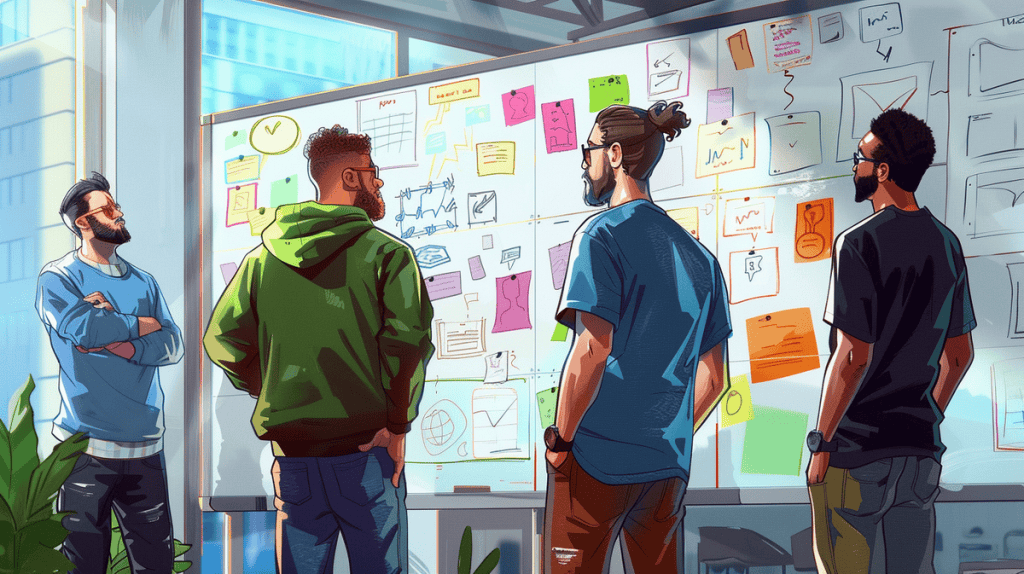Behavior-driven development (BDD) is one of the most important advancements for software teams. It’s a methodology that prioritizes user behavior in development. BDD ensures that teams build software that actually serves the needs of users. You’ll discover how it works and why it’s essential to continuously make software development better.
Behavior-Driven Development: Principles and Fundamentals

Behavior-Driven Development (BDD) is a software development methodology that outlines the behavior of a system from the user’s perspective. I’ve applied BDD to many different projects throughout my career, and it’s a very effective way to ensure technical and non-technical team members are on the same page.
BDD is an evolution of Test-Driven Development (TDD), and its main emphasis is communication between developers, testers, and business stakeholders. BDD is designed to facilitate collaboration and ensure all team members have a shared understanding of what a project requires.
Key BDD principles include:
- Behavior is described in a common language
- Focus is on outcomes
- Emphasis on team collaboration
- Behavior is described in examples
BDD essentially closes the gap between technical and non-technical stakeholders by describing behavior in a common language that anyone participating in the project can understand. This enables everyone involved in the project to participate in and understand the development process.
In my experience working with many different development teams, I’ve seen just how much BDD can improve project outcomes. When you implement BDD in your projects, you’ll likely notice improved communication, fewer misunderstandings, and a team that’s laser-focused on what the user needs.
BDD Frameworks and Tools
Choosing the right BDD framework is an important part of successful implementation. I’ve used several of the most common BDD frameworks throughout my career, each of which has its own pros and cons.
Here’s a quick comparison of some of the most popular BDD frameworks:
| Framework | Language | Key Features | Learning Curve |
|---|---|---|---|
| Cucumber | Multiple | Gherkin syntax, multi-language support | Moderate |
| SpecFlow | .NET | Seamless Visual Studio integration | Easy .NET developers |
| JBehave | Java | Flexible configuration, strong Java integration | Moderate |
When selecting a BDD framework for your project, consider your team’s programming language expertise, any existing tool integration, and community support.
In my experience, Cucumber has been my go-to for most projects, as it’s supported in various languages and has a large, active community. However, if you’re using primarily .NET technology, you might select SpecFlow.
Writing Effective BDD Scenarios
The Given-When-Then (GWT) format is the foundation of BDD scenario writing. This structure makes scenarios clear, concise, and easy to understand.
The GWT format is:
- Given: This is the initial context.
- When: This is the action or event.
- Then: This is the expected outcome.
When you write BDD scenarios, keep the language simple and avoid jargon. Ensure the scenarios are still short, and that they give the reader the details they need to know what to do.
Most common pitfalls include writing the scenarios in a complicated manner, adding too many behaviors to a single BDD scenario, and making the language too ambiguous. Teams often struggle with these when they first start writing BDD scenarios, but with practice you can fix them.
Here’s a great example of a well-written BDD scenario for a login feature:
Given I am on the login page
When I enter valid credentials
Then I should be redirected to the dashboard
This example is easy to read, understand, and test. If you use this structure, you’ll write more effective BDD scenarios for any type of application.
Implementing BDD in Software Development Workflow

Integrating BDD with existing Agile framework can significantly improve the development process. I’ve introduced BDD into both Scrum and Kanban and found that it nicely complements Agile methodologies.
How to introduce BDD to a development team:
- Educate team members about BDD principles.
- Start with smaller pilot projects.
- Scale BDD across the team gradually.
- Refine the process based on feedback.
In a BDD project, some of the traditional roles might blur. It’s common to see developers, testers, and business analysts working together to define the behavior of the system and then implement it. Therefore, you need to create a culture of shared ownership and open communication.
There are also a few hurdles you’ll face when adopting BDD. Patience is key to overcoming challenges, and you need a lot of persistence to convince the team BDD is the way to go. Many people have a hard time writing good scenarios, and initial productivity will likely be lower. Overcome these challenges by providing more training, dedicating time for feedback, and showing them how much better BDD is as early as possible.
Benefits of Behavior-Driven Development
I’ve seen in my career the various advantages of using BDD in software projects. You should see better communication and collaboration among team members, as BDD promotes more discussions and a shared understanding.
BDD also improves software quality because you define expected behavior before writing any code. As a result, you’ll likely have fewer regression problems, as scenarios are living documentation and automated tests.
Once your team members are proficient in BDD, you’ll likely find that you can develop software more quickly. The clear specifications and automated tests make it easy to iterate more quickly and release software more confidently.
Perhaps the most important benefit of BDD is that you’ll have better alignment of business requirements and technical implementation. This alignment ensures that you build software that more accurately meets user needs and expectations.
BDD Best Practices and Tips
Writing effective user stories is the key to successful BDD implementation. Keep the user stories focused on the who, what, and why for each feature, and you’ll be surprised at how easily the user stories will convert to BDD scenarios.
Keeping a healthy BDD test suite requires ongoing scenario refactoring and updates as the application changes. I recommend making scenario review and updates part of your regular sprint process to ensure you keep them up to date and effective.
Using BDD with continuous integration (CI) systems is an excellent way to supercharge your development workflow. This allows you to catch problems earlier and ensure new changes don’t inadvertently break other functionality.
BDD is challenging when you have complex scenarios or edge cases. The solution is to break down the complicated behavior into smaller scenarios and apply a more advanced BDD concept like scenario outlines or step definitions to solve the problem effectively.
Finishing off
I’ve used BDD on many projects, and it’s truly a step change in getting teams on the same page and delivering high-quality software. BDD is a great way to bridge the gap between technical and non-technical stakeholders.
It also improves communication, quality, and the speed of the software development lifecycle. When you prioritize behavior, you build solutions that are more user-centric.
Just keep in mind that like anything, mastering BDD takes dedication and patience. So start small – and then tweak your process as you learn more about what works well and what doesn’t. Over time, you’ll experience the value of clearer requirements, faster feedback, and more collaboration. Above all, BDD isn’t just a methodology – it’s a mindset shift that can improve your approach to building software.